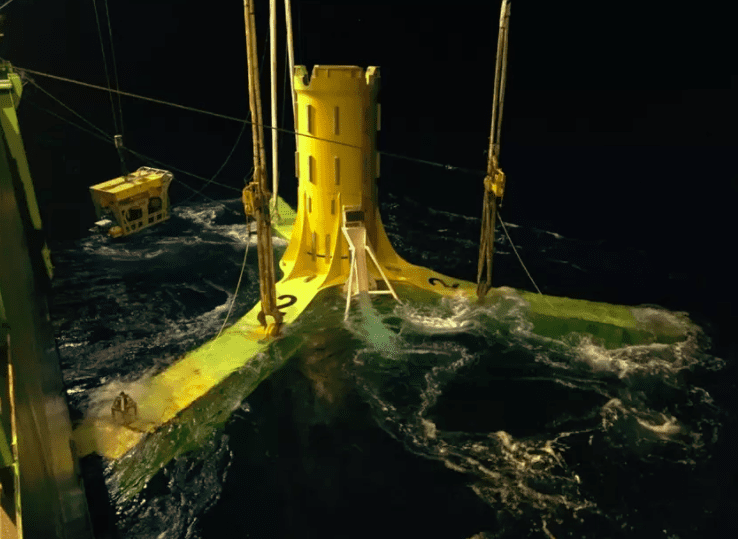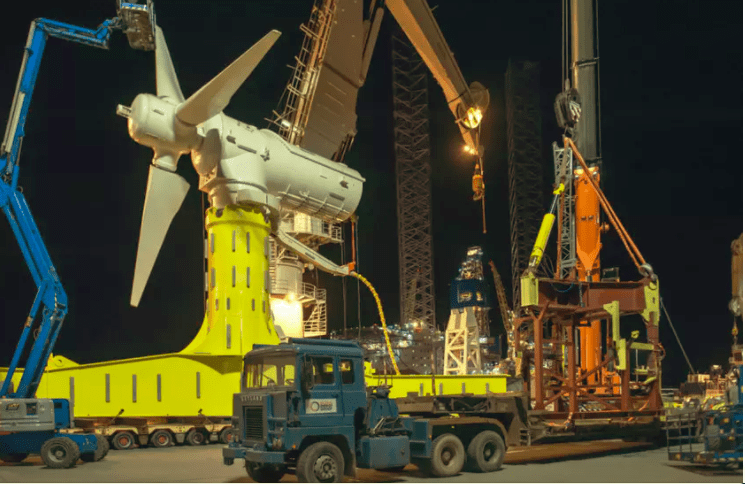The post UK Group Wants to Expand Largest Tidal Energy Project appeared first on POWER Magazine.

A UK-based energy company said it is talking with government officials about securing financial support for an expansion of the world’s largest tidal energy project.
SIMEC Atlantis Energy (SAE) on April 7 said it wants to move forward with a further rollout of “tidal stream technology” at the company’s MeyGen project in the Pentland Firth, a strait off the northern coast of Scotland considered to have some of the UK’s fastest-flowing waters. SAE, headquartered in Edinburgh, in an operational update of the project published Wednesday said it expects that an expansion of the existing installation “will unlock significant international opportunity for further projects and continue the reduction in the levelized cost of energy from tidal generation towards that of more established forms of renewable generation.”
The MeyGen project was profiled in the September 2018 issue of POWER.
SAE officials said the British government has indicated it will announce support mechanisms for MeyGen this summer, including an auction round for investment prior to the end of the year. The Environmental Audit Committee, a bipartisan group in the UK’s House of Commons that examines how government policies and programs impact the environment and sustainable development, has urged government leaders to find financial support for tidal energy.

Project Began Operating in 2018
The first four 1.5-MW turbines of MeyGen entered a 25-year operations phase in 2018. SAE officials said that in the project’s first two years, 24.7 GWh of electricity from MeyGen had been sent to the grid. The project is being built in stages; work on the second phase, which involves creating a subsea hub that would allow multiple turbines to be connected to one export cable, is ongoing.
SAE has said it plans to install an additional 49 turbines, each rated at 1.5 MW, in the project, at an estimated cost of £420 million ($ 577 million). The company in its update Wednesday said, “Operationally, MeyGen continues to provide vital learning to help the design and development for our future projects. Currently, three of the turbines have been moved to our workshop in Nigg to allow the team to complete onshore service works. We expect one of the turbines to be returned to service very shortly with the other two scheduled to be returned to service later in the year, once their service works are completed.”
SAE has said expansion of the MeyGen installation could result in creation of a turbine manufacturing facility at the Port of Nigg on the Scottish coast, creating more than 5,000 jobs, according to the company.
‘Good Progress’ on Demonstration Project
SAE on Wednesday also said its Raz Blanchard demonstration array, located between Alderney in the English Channel and France, “is making good progress as it looks to vary the existing site consents and permits to enable deployment of the next generation of SAE’s tidal turbine, which is designed to enable a step change reduction in the levelized cost of energy from tidal generation. The project will include four turbines, connected through a subsea hub, with a single export cable back to shore.” The company said that “additional offshore site surveys are planned for Q2 2021, which will allow for more the detailed resource modeling required for the site-specific detailed design.” SAE has partnered with Agence de Développement pour la Normandie, a French business development group, on the Raz Blanchard project.
SAE in February said one of its AR500 turbines, manufactured in Scotland, was installed in waters off Naru Island, part of Japan’s larger Goto Island chain. SAE said the pilot turbine generated 10 MWh of electricity in its first 10 days of operation. The project involves SAE leasing tidal generation equipment, and provisioning offshore construction services, to Japanese company Kyuden Mirai Energy.
Total global power output from tidal energy remains small, though several projects are being developed. Ocean Energy Europe recently released data showing that just 260 kW of tidal stream capacity was added in European waters last year.
Scotland is home to what is considered the first electric vehicle charging station powered by tidal energy. The facility is located on Yell, a part of the Shetland archipelago that includes about 100 islands. The charging station receives electricity from Nova Innovation’s Shetland Tidal Array, a four-turbine installation in Bluemull Sound, a strait between Yell and the island of Unst.
Nova Innovation in a March 22 announcement called the project “the first-ever electric vehicle … charge point where drivers can ‘fill up’ directly from a tidal energy source.” The station also includes a battery storage system to ensure a constant supply of electricity for vehicles, according to the company.
—Darrell Proctor is associate editor for POWER (@POWERmagazine).
The post UK Group Wants to Expand Largest Tidal Energy Project appeared first on POWER Magazine.